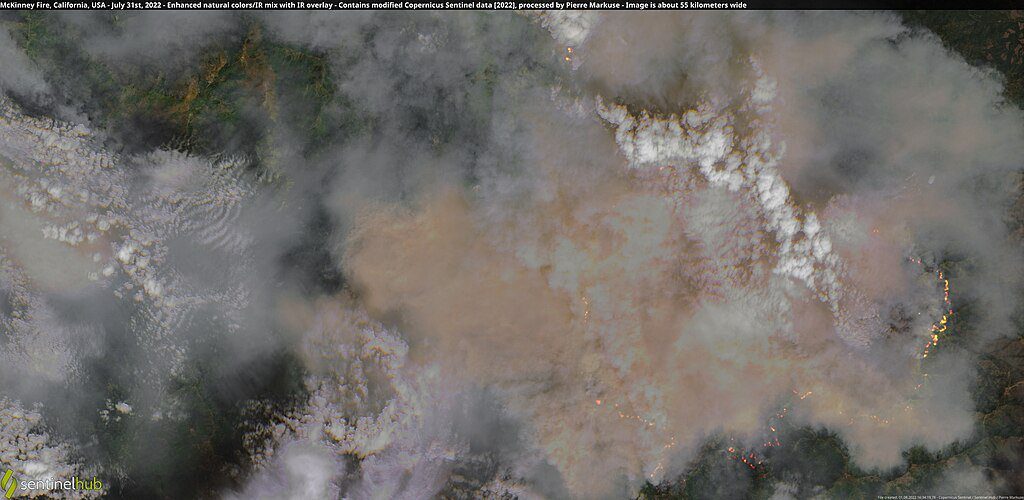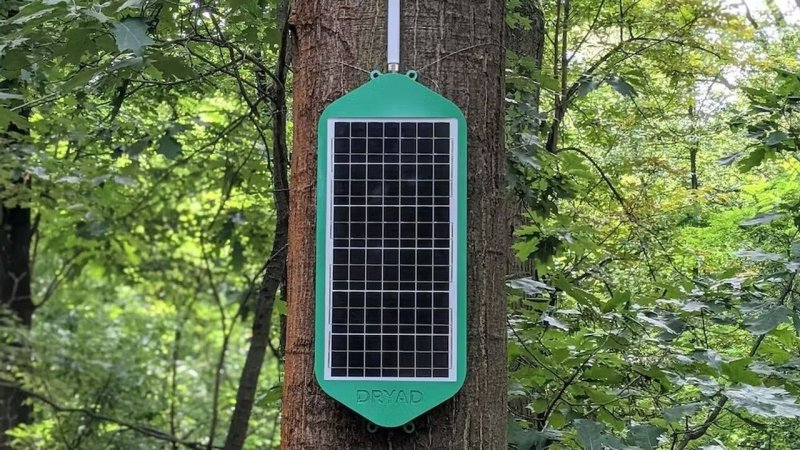In recent years the increase in summer temperatures has led to a dramatic increase in forest fires: Australia, Greece, the United States and so on and so forth (unfortunately). These natural disasters not only devastate ecosystems and infrastructure, but also cause loss of human and animal life.
Faced with this growing threat, the German startup Dryad Networks, introduced Silvanet, an advanced system that promises to detect fire in its early stages, offering real hope for fire prevention and protection of precious forests.
The importance of forests and the role of technology
Every year reports of devastating fires become more frequent. Destroyed people and homes often receive most of the media attention, but we must not forget that forests are just as vulnerable. How can we prevent forest fires even in complex places like the Amazon or Australia? The answer lies in technology.
Tools such as satellite imaging, ground cameras, drones and lookout towers are essential for monitoring for smoke or flames. However, in landscapes subject to rapidly flammable conditions, the speed at which forest fires spread makes detection as quickly as possible essential.

Action in 30 minutes against forest fires
Dryad Networks He developed Silvanet, a product suite that detects fires during their ember phase. This means they can be identified within the first hour, or even within the first 30 minutes, thanks to sensors of highly precise gases, capable of detecting gases such as hydrogen and carbon dioxide with a sensitivity of parts per million (PPM).
Carsten Brinkschulte, CEO and co-founder of Dryad, emphasized the importance of early intervention. “We must alert the fire brigade as soon as possible. The fire must still be small when they arrive on site. There is no point in notifying them when the fire has already reached the size of a football field.”
How does Silvanet work?
Silvanet is a sort of "ecosystem" of elements that interact with each other to achieve the objective of tackling forest fires:
- Sensors: Powered by solar energy and equipped with integrated AI, they measure various gases, temperature, humidity and air pressure. These sensor nodes connect to Silvanet gateways using LoRa, a long-range radio network. The sensor AI is constantly trained to recognize the specific smell of a fire in a particular forest.
- Mesh gateways: These distributed gateways support a wide range of compatible sensors, enabling large-scale deployment of sensor networks in any type of forest.
- Cloud platform: Cloud-based tools for analysis, monitoring and alerting.
The future of Dryad Networks
The company is currently in the industrialization and market entry phase. With production of 30.000 sensors and hundreds of gateways, demand far exceeds supply. Brinkschulte noted with a hint of humor: “We're pretty much the only company doing this professionally. I expected some competition, but everyone seems to be sleeping." Already.
Despite Silvanet's promises, there are challenges ahead. Establishing communication in dense forests and developing durable hardware that can last two decades without maintenance is no easy task.
But Dryad is determined to overcome these obstacles, and the results so far are promising. Her devices are already operational in various areas of Greece, Spain, Portugal, California and Canada. Specifically, Dryad's technology was tested in the formidable redwood environment of California, where radio waves are impeded by towering redwood trees.


